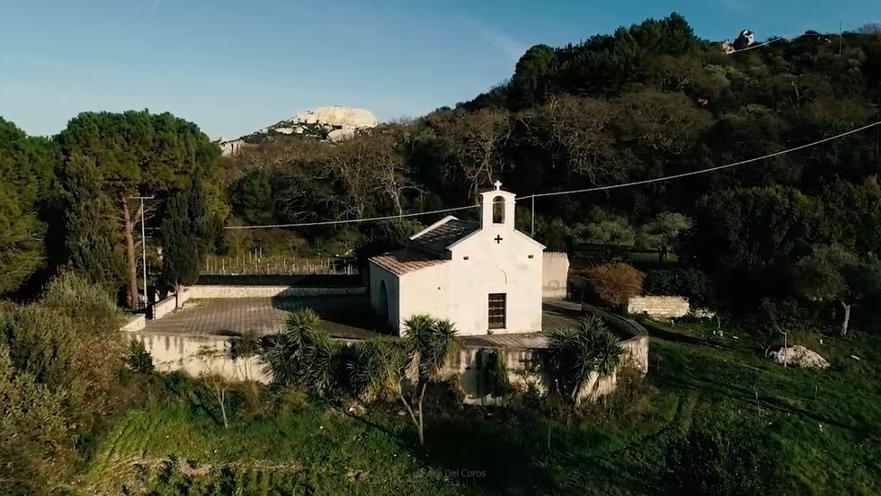Cargeghe between history and nature, an island of tranquility a few kilometers from Sassari
Located in the historical region of Logudoro at 335 meters above sea level, Cargeghe small town near Sassari, 13 kilometers away, has about 600 inhabitants. From documents collected in the Municipality's Historical Archives, Cargeghe of medieval origin, was included in the Giudicato of Torres in the 11th century, belonged to the curatoria of Figulinas and then to the Malaspina family. After the end of the Giudicato it was administered by it as an autonomous state. The Malaspinas then came into conflict with the Aragonese and were defeated, so in 1353 it was enfeoffed to John Metge and later, in1361, to Berengario Fillol.
After the war between Aragon and Arborea the village was granted to Bernardo Centelles, who ceded it in1425 to Serafino di Montanana and incorporated into the Barony of Ploaghe. In 1500 it passed first to the Castelvì of the Sassari branch and then to the Cardona and at the end of the century to the Castelvì of Laconi. In the mid-17th century the Baroque plague caused the loss of most of its inhabitants but it was repopulated. In 1821 it was included in the Province of Sassari and was redeemed from feudal attachment to the Aymerichs in 1839. The small town is rich in historical, architectural and natural beauty. Among the sites of archaeological interest is the necropolis of Giorrè-S'Èlighe Entosu consisting of numerous Domus de Janas – in the municipal territory there are 22 – among which stands out the tomb IV known as “of the spirals”, historiated with spiral decorative elements. Particularly suggestive are the ruins of as many as eight 19th-century hydraulic mills for grinding grain. The town's churches are from different eras. The late Gothic-style parish church, dedicated to the martyrs Quirico and Giulitta – whose cult the people of Cargeghe are particularly devoted to and celebrate on July 15 – was built between the 15th and 16th centuries. Over time it has been subject to various interventions, but some chapels have preserved the original structure. It keeps priceless works such as the Holy Family by Florentine mannerist Baccio Gorino and a Madonna also from the late 16th century. The country church of Santa Maria 'e Contra is considered the smallest Romanesque church in Sardinia, a 12th-century jewel that belonged to the Camaldolese. Made of medium-sized limestone blocks, it has a single-nave plan with an oriented apse. The church was included in the curatorate of Ploaghe and was a dependency of the basilica of Saccargia; the title “Sancte Mariae in Contra” is mentioned among the Sardinian possessions of San Salvatore di Camaldoli from 1125. Also of interest is the 1630 oratory of Santa Croce, home of the confraternity that no longer operates today; it preserves a wooden retable and a crucifix used in the past for the rite of “S'Iscravamentu” (deposition of Christ from the cross) the service held on Friday, which draws on popular devotion, during Holy Week. Around the church of Santa Maria 'e Contra in 1977 the outdoor scenes of the Taviani brothers' film “Padre Padrone”, based on the autobiographical novel of the same name written by Gavino Ledda, which won the Golden Palm at the 30th Cannes Film Festival. Another beauty of the village is the parish house, a large 17th-century aristocratic building adjoining the parish. On the western outskirts of the village, is the winding Roman-era (200 B.C.) paved path of Sos Baiolos that leads to the outskirts of the nearby village of Ossi. The area is a small environmental treasure chest immersed in Mediterranean scrub, oak and holm-oak forests, dotted with walnut, almond and apple trees, of which it was rich in ancient times, where the cliffs of the limestone plateau of Giorrè stand out, with its busy Via Ferrata main tourist attraction, where in spring hawks, buzzards and golden eagles nest and can be glimpsed in flight from the town. In the cultural sphere are La Biblioteca di Sardegna and L'Editoriale Documenta, entities that have been internationally established in book production for years now. The Library of Sardinia, the first library facility entirely dedicated to the book heritage of Sardinia, boasts a collection of about 6,000 volumes on Sardinian themes, or written by Sardinian authors. It also includes a substantial collection of island newspapers and periodicals, an extensive audiovisual collection and the scores of Sardinian composer Lao Silesu. The library can also be consulted online. Cargeghe's geographic location is ultimately fortunate because not far from the city, so that its services can be easily used, but at the same time secluded for those seeking tranquility and peace in a site that has held firm to its roots as an authentic Logudorese village. The political action of the current municipal administration led by Antonio Ruiu is to give the town a tourist-environmental and excursionist vocation, encouraging the birth of all those outdoor, receptive activities and at the same time promoting citizen associationism. Some results are beginning to take shape, such as the birth of the association “Su Portale de s'Aineddu”, which carries out excursions in the area on donkey backs, while others are being defined, such as the creation of a civil protection association and the Pro Loco capable of catalyzing the active forces of the village.

